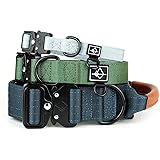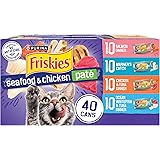As responsible pet parents, we always want the best for our beloved companions. Unforeseen accidents and illnesses can happen, and medical care can be expensive. This article explores cat insurance, a vital tool for managing vet costs and ensuring your cat receives the best possible care. We’ll delve into the world of pet insurance, including what pet health insurance covers, why it’s essential for cat owners, and how to find the best pet insurance plan for your feline friend. Consider cat insurance as a financial safety net designed to help you manage unexpected veterinary costs, ensuring your pet’s health without straining your budget.
Understanding Pet Insurance
What is Pet Insurance?
Pet insurance is essentially health insurance for your furry companions, designed to help offset the often high costs of veterinary care. Just like human health insurance, pet insurance plans offer coverage for various medical expenses, depending on the insurance policy you choose. The basic idea is that you pay a monthly premium, and in return, the pet insurance company reimburses you for a portion of eligible vet bills. This can include costs associated with accidents and illnesses, injuries, surgeries, medications, and even some wellness procedures. Think of it as a safety net that helps you provide the best medical care for your cat without having to worry about the financial burden.
Importance of Pet Insurance for Cat Owners
Pet insurance for cats is particularly crucial because cats are prone to specific health issues, and vet bills can quickly accumulate. A comprehensive cat insurance plan can protect you from unexpected expenses related to accidents and illnesses. The peace of mind knowing that you can afford the necessary medical care for your cat without facing a difficult financial decision, is invaluable. Securing insurance for cats also enables pet parents to seek preventative care coverage early, which is crucial for catching conditions before they escalate. Investing in a cat insurance plan is an investment in your cat’s health and your financial well-being.
How Pet Insurance Works
Pet insurance generally works by reimbursing pet parents for eligible vet expenses after they’ve paid the bill. You typically pay a monthly premium for your chosen pet insurance policy. If your cat needs medical care, you take them to the vet as usual. After paying the vet bill, you submit a claim to your pet insurance company, providing documentation of the services received and the costs incurred. The pet insurer will then process your claim and reimburse you based on your coverage options, deductible, and reimbursement percentage. Most policies include a waiting period before coverage fully kicks in.
How To Buy a Pet Insurance Plan
When you decide to get a furry companion, whether it’s a tabby cat or a loyal dog, ensuring their well-being is crucial. One of the best ways to safeguard your pet’s health is through pet insurance. Shopping for pet insurance can seem overwhelming, but understanding the options available to you makes the process much more manageable. First, consider the common health conditions that dogs and cats may face. Plans that cover injuries and illnesses can provide financial relief should your pet need unexpected medical attention. Look for insurance plans that cover visits to any licensed veterinarian, as this flexibility allows you to choose the best care for your furry friend.
It’s essential to note that while many pet insurance providers offer comprehensive policies, pet insurance does not cover certain pre-existing conditions or routine care, such as vaccinations and dental cleanings. Therefore, it’s vital to read the fine print and understand what each insurance plan covers. Many pet insurance providers offer various plan options, including those specifically designed for multiple pets. If you’re a pet parent to more than one furry friend, consider looking into insurance for multiple pets to save on overall costs while ensuring that each of your pets gets the care they deserve.
When evaluating different policies, pay attention to what each plan includes coverage for. Some standard pet insurance plans may cover only basic injuries and illnesses, while others may offer additional features such as wellness care or coverage for alternative treatments. Make sure you’re selecting the right pet insurance that aligns with your pet’s specific needs and your budget. For example, if your dog or cat is prone to certain conditions, you may want to look for a policy that addresses those specific issues. Also, take the time to compare pets best offers from various providers to find the most suitable coverage for your furry friend.
Ultimately, getting the care your pet deserves doesn’t have to be a financial burden. By carefully considering your options and understanding the specifics of what each insurance plan covers, you can confidently choose the best plan for your cat or dog. Your pets are family, and ensuring their health and well-being through the right insurance can provide peace of mind for years to come.
Pet Insurance for Your Cat – For Kittens to Senior Cats
The beauty of pet insurance lies in its adaptability to your cat’s life stage. Kittens, with their boundless energy, are prone to accidents and illnesses, making early pet insurance coverage crucial. As your cat ages, they may develop chronic conditions, and pet insurance can help manage the ongoing vet costs associated with these illnesses. Senior cat insurance plans can be tailored to address age-related ailments, providing financial assistance for diagnostics, treatments, and medications. Finding the best pet insurance ensures your furry friend receives optimal medical care throughout their life, from playful kittenhood to their golden years. As responsible pet parents, knowing you’ve secured insurance for cats through every stage offers unparalleled peace of mind. Finding the right insurance plans ensures comprehensive wellness and protection.
Types of Cat Insurance Plans
Navigating the world of pet insurance requires understanding the different types of insurance plans available. Typically, cat insurance plans fall into several categories, each offering varying levels of coverage and benefits. Accident-only plans are the most basic, covering vet costs related to accidental injuries. Accident and illness plans offer broader protection, including coverage for accidents, illnesses, and injuries. A comprehensive pet insurance plan, often referred to as pet health insurance, provides the most extensive protection, encompassing accidents, illnesses, injuries, and sometimes even wellness care. The best pet insurance depends on your budget and your cat’s specific needs, so it’s important to carefully evaluate the different options offered by pet insurance companies.
Comprehensive Coverage Options
Comprehensive coverage options for cat insurance provide the broadest range of protection, ensuring your feline friend receives the best possible medical care without you having to worry excessively about the financial strain. These pet insurance plans typically cover accidents, illnesses, injuries, surgeries, hospitalizations, diagnostic tests, medications, and even some alternative therapies. Some comprehensive plans also include coverage for hereditary and congenital conditions, which can be a significant concern for certain cat breeds. By opting for comprehensive pet health insurance, you can have peace of mind knowing that your cat is protected against a wide array of potential health issues. The higher premium often reflects the extensive coverage offered, making it a worthwhile investment for many pet parents.
Customizable Plans for Your Cat
One of the significant advantages of pet insurance is the ability to customize insurance plans to fit your cat’s unique needs and your budget. Most pet insurance companies offer various deductible options, reimbursement percentages, and annual coverage limits. Choosing a higher deductible can lower your monthly premium, while a lower deductible will result in higher premiums but lower out-of-pocket expenses when you file a claim. The reimbursement percentage determines how much of your vet bill the insurance company will reimburse you for after you’ve met your deductible. Selecting the right combination of deductible, reimbursement percentage, and coverage limit allows you to create a pet insurance policy that provides adequate coverage at a price you can afford. Securing insurance for cats can be both comprehensive and budget-friendly through customized insurance options.
Wellness Plans versus Accident-Only Plans
When exploring cat insurance, understanding the difference between wellness plans and accident-only plans is crucial. Accident-only plans are the most basic type of pet insurance coverage, focusing solely on vet costs resulting from accidental injuries, such as broken bones, cuts, or swallowed objects. In contrast, wellness plans are designed to cover routine and preventive care, such as vaccinations, annual check-ups, dental cleanings, and flea and heartworm prevention. While accident-only plans are more affordable, they don’t provide coverage for illnesses or preventive care. Some pet insurance companies offer wellness plans as add-ons to their accident and illness insurance plans, allowing you to tailor your pet health insurance to your cat’s specific needs and your budget. Consider your cat’s lifestyle and health history when deciding whether a wellness plan is right for you. Many pet parents see wellness plans as preventive care coverage that’s essential for maintaining their cat’s overall health.
Comparing Pet Insurance Companies
Top Pet Insurance Companies for Cats
When seeking the best pet insurance for cats, several pet insurance companies stand out for their comprehensive coverage options and customer service. ASPCA® Pet Health Insurance, for example, is a well-regarded provider with a range of insurance plans. Nationwide Pet Insurance is another popular choice, known for its extensive coverage, which also includes dog insurance. Comparing policies from different pet insurance companies can help pet parents find a cat insurance plan that aligns with their budget and their cat’s specific medical needs. It’s essential to check customer reviews and ratings to gauge the reliability and responsiveness of different pet insurers.
Evaluating Coverage and Costs
Evaluating coverage and costs is crucial when choosing a pet insurance policy. Consider the deductible, reimbursement percentage, and annual coverage limits offered by different insurance plans. A lower deductible means you’ll pay less out-of-pocket, but your monthly premium may be higher. Look for pet insurance plans that offer comprehensive coverage for accidents and illnesses, including chronic conditions and hereditary issues. Consider if the insurance policy includes wellness coverage for preventive care. Understanding what each pet insurance company offers can help you find the best pet insurance plan that balances cost and coverage effectively for your cat.
How to Get a Free Pet Insurance Quote
Getting a free pet insurance quote is a straightforward process that can help you compare insurance plans and find the best pet insurance option. Most pet insurance companies offer online tools where you can enter your cat’s information, such as age, breed, and location, to receive a customized insurance quote. Some pet insurers may also ask about your cat’s health history to provide a more accurate estimate. Getting a free quote from multiple companies can help you assess coverage options and pricing, ensuring you find the best pet insurance coverage for your pet. Comparing multiple free quotes allows you to make an informed decision before committing to an insurance policy.
Making the Most of Your Insurance Coverage
Understanding Insurance Claims for Pets
Understanding insurance claims is essential for effectively utilizing your pet insurance. Familiarize yourself with the claims process of your insurance company. Typically, you will need to submit a claim form along with your vet bills and medical records. Some pet insurance plans may require pre-authorization for certain procedures. Be sure to understand your policy’s coverage options, deductible, and reimbursement percentage, as these factors will determine the amount you receive back from the insurance company. Keeping accurate records of your cat’s medical history and vet bills will streamline the claims process and help ensure timely reimbursement. By understanding insurance claims, pet parents can leverage their insurance for cats effectively.
How to Find the Best Pet Insurance for Your Cat
Finding the best pet insurance for your cat involves a careful assessment of your cat’s specific needs and your financial situation. Start by researching different pet insurance companies and comparing their insurance plans, coverage, and costs. Consider your cat’s age, breed, and health history, as these factors can influence the type of coverage you need. Look for insurance plans that offer comprehensive coverage for accidents and illnesses. It’s also essential to read customer reviews and ratings to gauge the pet insurers’ reputation and customer service quality. Finding the right insurance for cats can lead to peace of mind and financial security, knowing your cat can receive the best medical care without causing a financial strain.
Tips for Pet Parents on Using Insurance Effectively
To effectively use your cat insurance coverage, here are some practical tips for pet parents. First, understand your insurance policy thoroughly, including what the plan covers, any exclusions, and the claims process. Take your cat for regular check-ups to detect potential health issues early, as some insurance plans may cover preventive care. When visiting the vet, always inform them that you have pet insurance and ask for detailed invoices that include diagnostic codes. Submit claims promptly and keep records of all communication with your insurance company. By following these tips, pet parents can maximize the benefits of their pet insurance and ensure their cats receive the best possible medical care with insurance for cats.
ASPCA® Pet Health Insurance
Overview of ASPCA® Pet Health Insurance
ASPCA® Pet Health Insurance stands out as a prominent provider in the pet insurance industry, offering a variety of pet insurance plans designed to meet the diverse needs of pet parents. With a long-standing reputation for quality service and comprehensive coverage, ASPCA® Pet Health Insurance is a popular choice for those seeking to protect their feline companions. These insurance plans typically cover accidents and illnesses, injuries, and can be customized with different deductible options, reimbursement percentages, and annual coverage limits. The goal of ASPCA® Pet Health Insurance is to provide pet parents with peace of mind, knowing they can afford the best medical care for their cats without facing undue financial strain. Securing insurance for cats through a reputable company such as ASPCA® Pet Health Insurance can greatly benefit pet owners and their feline friends.
Unique Benefits of ASPCA® for Cat Owners
ASPCA® Pet Health Insurance offers unique benefits tailored specifically for cat owners, setting them apart from other pet insurance companies. Some of these unique features may include coverage for certain hereditary and congenital conditions common in cats, which can be a significant concern for pet parents. Additionally, ASPCA® Pet Health Insurance often provides flexible coverage options, allowing pet parents to customize their pet insurance policy to fit their cat’s specific needs and their budget. Another benefit is their focus on customer service, with dedicated support teams available to assist with claims and answer questions. These features make ASPCA® Pet Health Insurance a compelling choice for cat owners seeking comprehensive and personalized coverage for their pets, ensuring they get the best pet insurance plan possible.
How ASPCA® Compares to Other Pet Insurance Plans
When comparing ASPCA® Pet Health Insurance to other pet insurance plans, several factors come into play. One key aspect is the extent of coverage offered, including whether the plans cover accidents and illnesses, injuries, hereditary conditions, and wellness care. ASPCA® Pet Health Insurance typically offers comprehensive coverage options, making them a strong contender. Another important consideration is the cost of the policy, including monthly premiums, deductibles, and reimbursement percentages. It’s also essential to evaluate the company’s reputation for customer service and claims processing efficiency. By carefully comparing these factors, pet parents can make an informed decision about whether ASPCA® Pet Health Insurance is the best plan for their cat, taking into account their individual needs and budget, and securing insurance for cats with a company they trust.
How To Find the Best Pet Insurance for Cats
Finding the best pet insurance for cats requires careful research and consideration of various factors. Start by evaluating your cat’s specific needs, including their age, breed, health history, and lifestyle. Research different pet insurance companies and compare their plans, coverage options, and costs. Pay close attention to the deductible, reimbursement percentage, and annual coverage limits offered by each policy. It’s also beneficial to read customer reviews and ratings to gauge pet insurers’ reputation and customer service quality. Getting a free quote from multiple companies can help you assess coverage options and pricing. Ultimately, finding the right insurance for cats ensures peace of mind and financial security, knowing your cat can receive the best medical care without causing a financial strain, and securing the best plan available.
Start your pet insurance quote now to help prepare for those unexpected costs!
Don’t wait until an unexpected vet bill arises to consider getting pet insurance for your feline friend. Start your pet insurance quote today to explore available coverage and prepare for those unforeseen costs. Getting a free quote is a quick and easy way to compare plans from various pet insurance companies and find the best plan that aligns with your cat’s needs and your budget. By taking proactive steps to secure coverage, you can ensure your cat receives the best medical care without having to worry excessively about the financial burden. Start your search for the perfect cat insurance plan now and safeguard your pet’s health and well-being.





























































